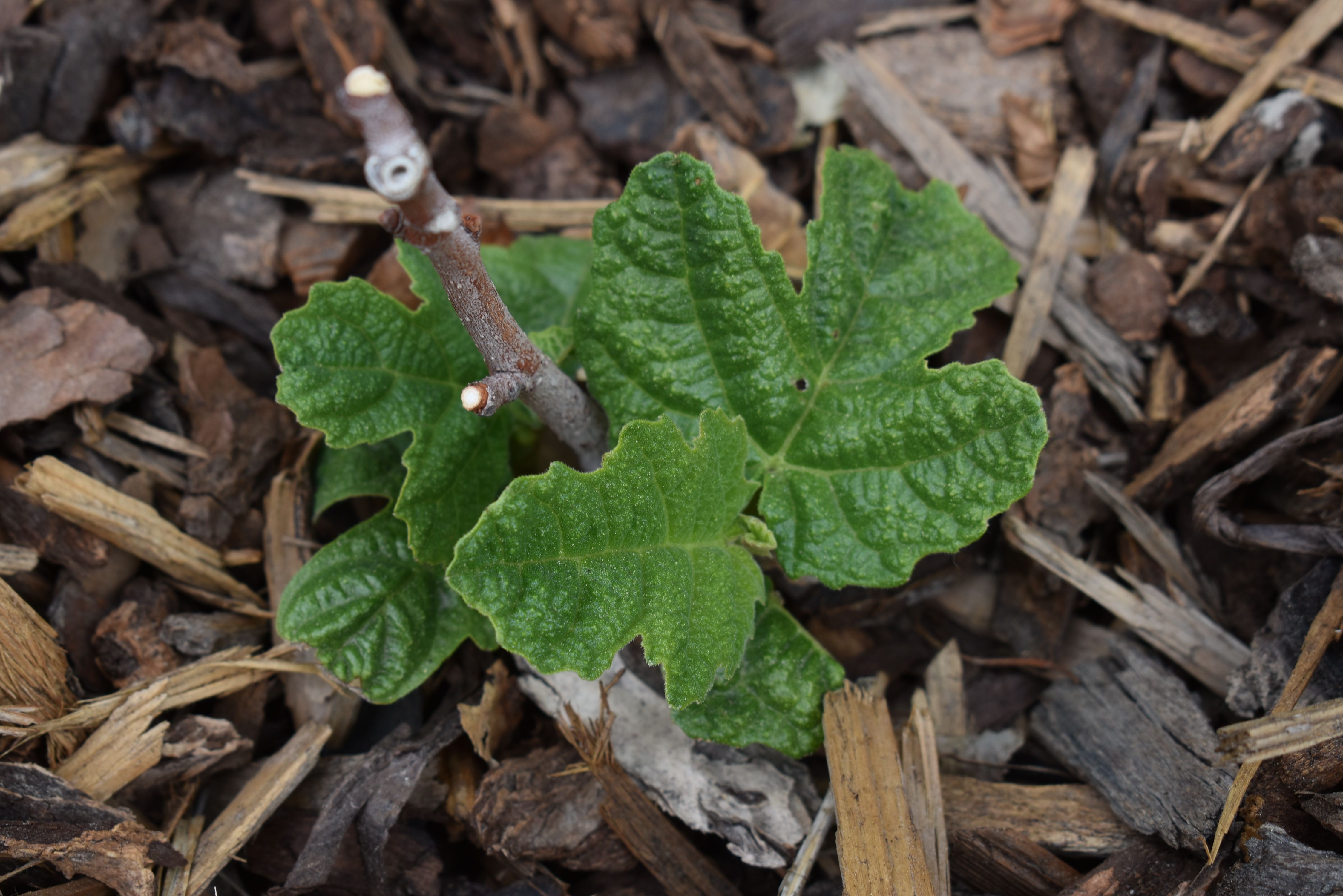Plant Details:
Plant Type: Deciduous Tree
Plant Family: Moraceae
Plant Description: This particular variety is considered to be one of the hardiest edible figs, but requires proper care and protection in the winter. It is self-fertile and has large, deeply lobed, leathery foliage. Spring brings insignificant flowers that bloom inside hollow receptacles. As the blossoms mature, they become soft, fleshy, and edible. The skin can be light brown to deep purple with sweet, strawberry red flesh. They fully ripen in late summer and early fall on new wood. The branches may die during the winter, but it should regrow from the roots and still produce fruit every year.
Maintenance:
Maintenance Type: Tree - Fruit
Plant Care: Tree - Fruit (single-stemmed woody plants cultivated for their edible fruit): Prune regularly to promote health, provide air circulation, maintain a desirable shape, and to remove dead or damaged branches. Pruning is best done in late winter to early spring. Pruning techniques vary depending on tree species. Understand the needs of each tree type before pruning.
Provide adequate water and nutrients to aid in fruit development. Thin fruit as necessary to avoid excessive stress on the tree, especially on apple and peach trees.
Fruit trees will require pest control to reduce damage to fruit and to keep the tree healthy. Find out the appropriate pest control methods for the species before attempting to control pests.
Plant Attributes:
Mature Size: 10-15' tall x 9-12' wide
Utah Native: No
Plant Select: No
Pollinator Friendly: No
Localscapes: Tree, Foundation Plant
Foliage Interest: No
Foliage Colors: Dark Green, Green
Bloom Colors: Green, Inconspicuous
Bloom Seasons: Spring
Bloom Period: Apr - May
Growing Conditions:
Hardiness Zone: 6 to 10
Light Requirement: Full Sun (6+ hrs sun)
Irrigation Requirement:  Moderate (1/2" every 7-10 days)
Moderate (1/2" every 7-10 days)
 Moderate (1/2" every 7-10 days)
Moderate (1/2" every 7-10 days)
Salt Tolerant: Unknown
Deer Resistant: Yes
Garden Location:
-
Commercial Concepts
- Education Center Staff Parking
Garden Staff Tips & Insights:
Where winter temperatures drop below 25°F, the fig tree must be winterized in order to stay healthy and fruit bearing. After all leaves have dropped in the fall, prune out any branches that are weak, diseased or crossing. Secure all branches in one grouping (you can tie them to each other or to a pole). Place a thick layer of mulch or leaves directly above the roots. Wrap the tree in several layers of burlap, leaving the top open for moisture and heat to escape. Finally, make a sturdy structure around the tree with stakes and/or chicken wire, and cover this structure securely in a material like floating row cover. An additional layer of mulch can be added around the base of the structure. Remove the protection when temperatures stay above freezing.


